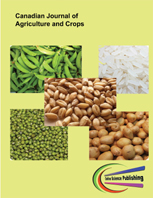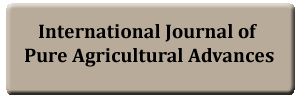Integrated Management of Damping off and Wilt (Caused by Sclerotium Rolfsii) of Sunflower
DOI:
https://doi.org/10.20448/803.4.2.84.92Keywords:
Integrated management, Scleotium rolfsii, Identification, Damping off, Wilting, Sunflower, Disease incidence.Abstract
An experiment was carried out to evaluate the effect of different treatments either alone or in combination to control the damping off and wilt disease (Sclerotium rolfsii) of sunflower.The experiment was carried out following randomized complete block design (RCBD) with ten treatments viz. T1 = Soil drenching with Datura, T2 = Seed treatment with Datura, T3 = Vermicompost, T4 = Poultry litter, T5 = Poultry litter + Seed treatment with Neem, T6 = Forestin (seed treatment), T7= Vermicompost + Forestin (seed treatment), T8 = Cow dung + Seed treatment with zinger, T9 = Poultry litter + Soil drenching with Datura and T10 = Control. The maximum number of field emergence (87%) was found at T5 treated plot, followed by T2 and T8 (both 84%). The lowest percent (0%) damping off was observed at treatment T2 and highest (4.92%) at T10 (Control). In case of wilting, disease incidence was lowest (0.6167%) at 30 DAS in case of T7 and 0.3933% at 50 DAS in case of T5, while T2 showed statistically similar results with the lowest data. Highest disease incidence percentages were found at T10 (Control) in both 30 and 50 DAS. Among all the treatments, maximum yield was observed at T2 treated plot (4.697 t/ha), while T9 showed statistically similar results (4.593 t/ha). Overall the research result revealed that, Seed treatment with Datura (T2) showed minimum disease incidence percentages for both damping off and wilt and also gave highest yield.


